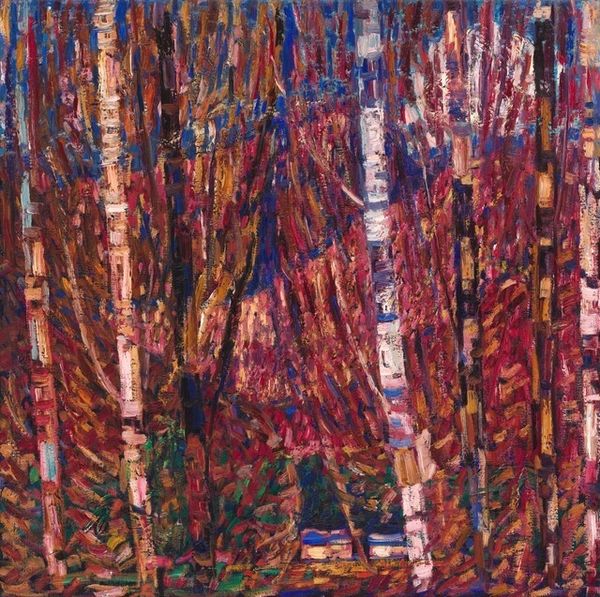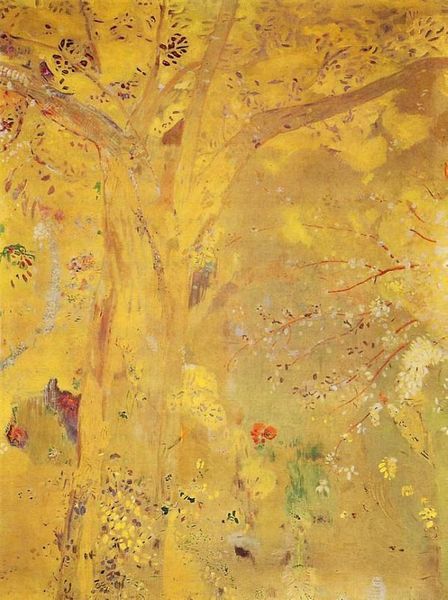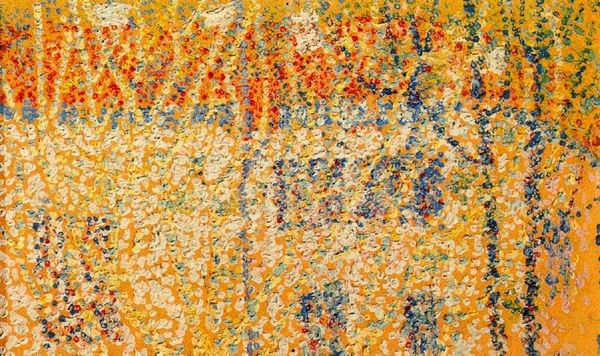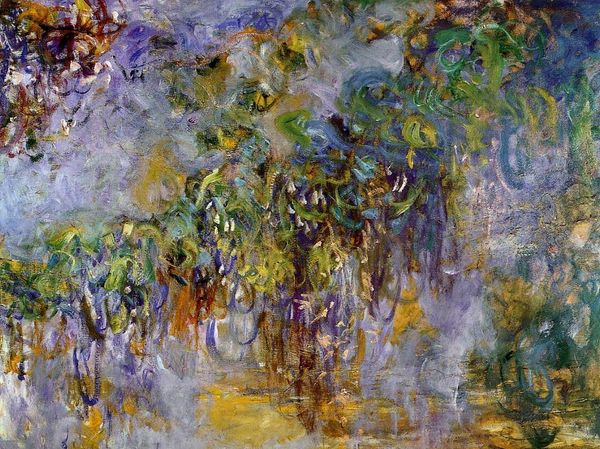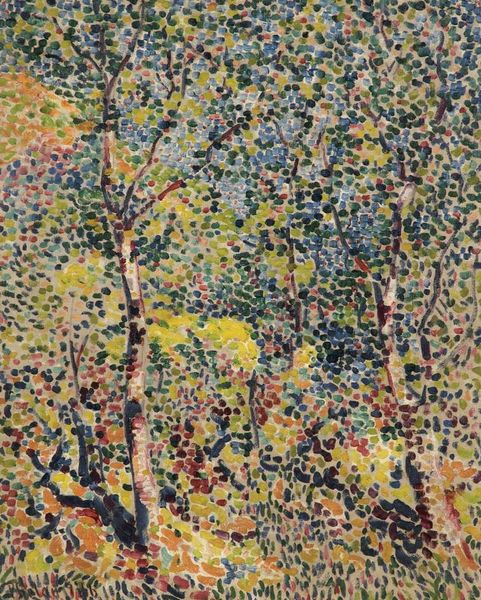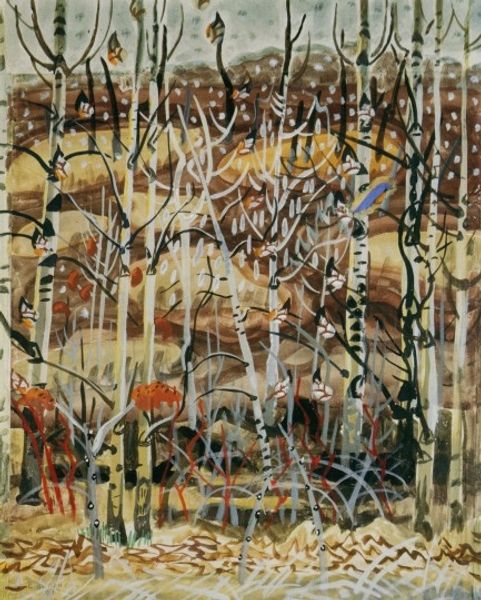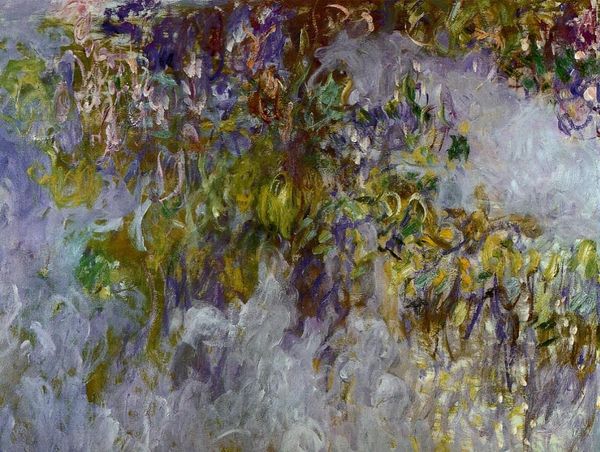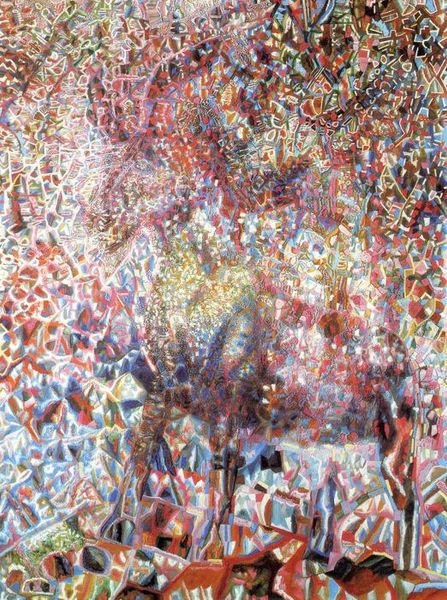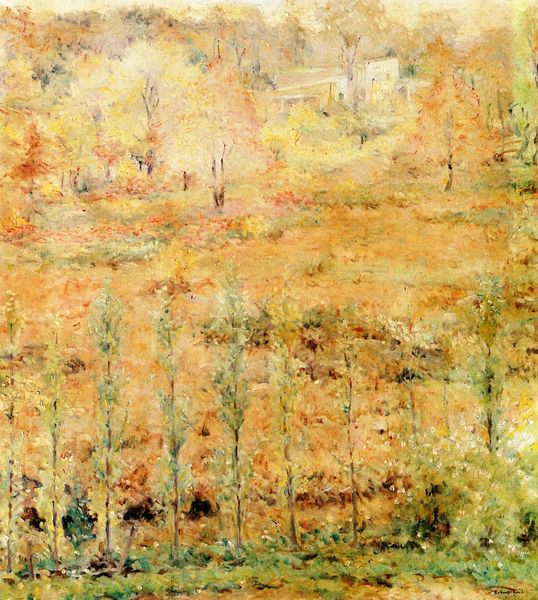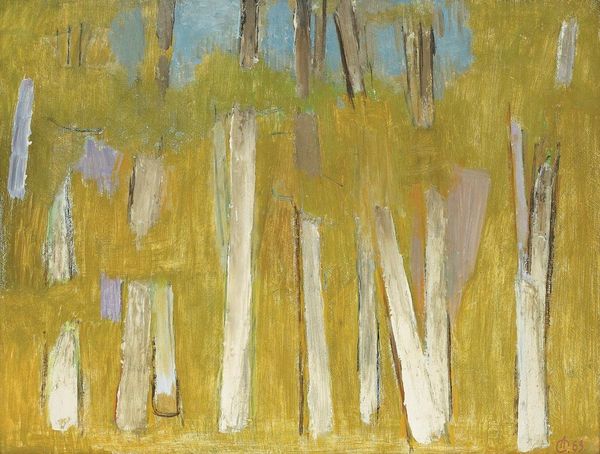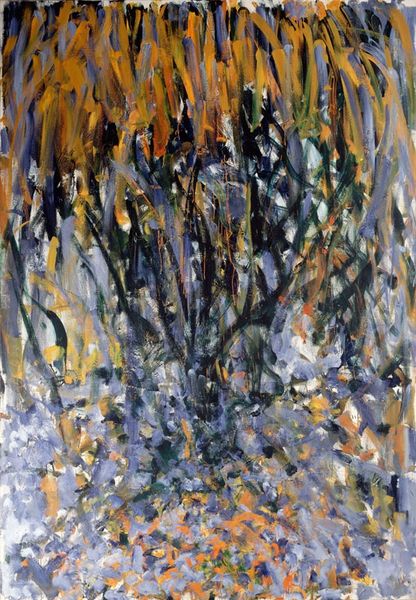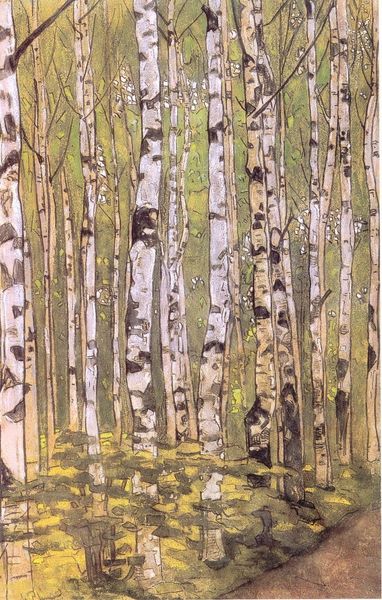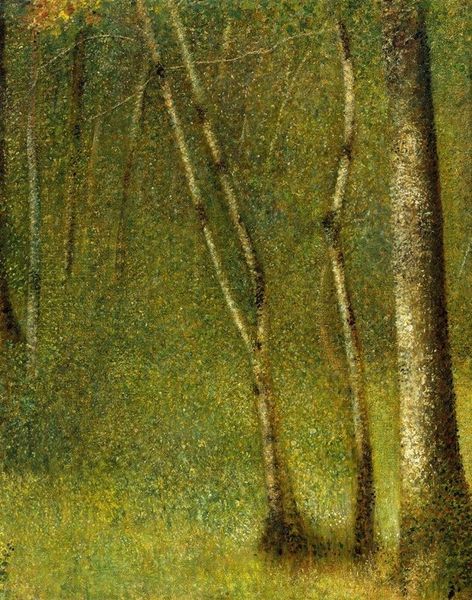
painting, oil-paint
#
tree
#
organic
#
abstract painting
#
painting
#
oil-paint
#
landscape
#
form
#
abstract pattern
#
organic pattern
#
expressionism
#
abstract-art
#
abstraction
#
symbolism
#
abstract art
#
organic texture
Copyright: Public domain
Editor: This is Kazimir Malevich’s “Winter Landscape,” created in 1906 using oil paint. It strikes me as… intensely textured. All those individual strokes! What can you tell me about it? Curator: The physicality is precisely the point. Note the visible brushstrokes, the impasto—the sheer labor involved. What materials were accessible, affordable? What kind of brushes? We must ask, how did the means of production influence this piece? Editor: So you're thinking about the availability of art supplies in Russia at the time? Did that influence the style? Curator: Absolutely. Consider also the social context: industrialization, rural poverty. How might Malevich be responding to these material realities through his art-making? Is he romanticizing rural life, or critiquing it through the harshness of the materials? Editor: It's almost like the thick paint is a metaphor for the harshness of winter, maybe even the harshness of life for people back then. Curator: Precisely! Think about the pigment itself. Where did Malevich source the white, the ochre? Was there a developing pigment industry at this time affecting the price or availability? Consider also how this painting might be displayed and consumed—a luxury object for the rising bourgeois class? Editor: I hadn’t thought about that, but it makes perfect sense. So the materials themselves are clues about the society it came from and who it was made for. Curator: Indeed. By focusing on the tangible aspects of "Winter Landscape," we see a connection between art, labor, and society, prompting questions about artistic value itself. Editor: I will definitely look at art with new eyes. Paying more attention to not only the aesthetic, but how the materials help tell the story.
Comments
No comments
Be the first to comment and join the conversation on the ultimate creative platform.
